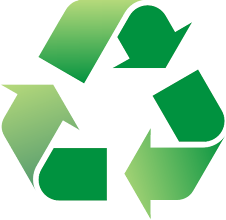Single stream (also known as “fully commingled”) recycling refers to a system in which all paper fibers and containers are mixed together in a collection truck, instead of being sorted into separate commodities (newspaper, cardboard, plastic, glass, etc.) by the resident and handled separately throughout the collection process. In single stream, both the collection and processing systems must be designed to handle this fully commingled mixture of recyclables.
Advantages
Proponents of single stream note several advantages:
* Reduced sorting effort by residents may mean more recyclables are placed at the curb and more residents may participate in recycling;
* Reduced collection costs because single-compartment trucks are cheaper to purchase and operate, collection can be automated, and collection routes can be serviced more efficiently;
* Greater fleet flexibility which allows single compartment vehicles to be used for refuse or recycling, providing greater fleet flexibility and reducing the number of reserve vehicles needed. (To avoid confusing customers, use a large sign/banner to distinguish when a refuse truck is being used for recycling);
* Participation and allows you to spend less time recycling volume per household may increase and worker injuries may decrease because the switch to single stream is often accompanied by a switch from bins to cart-based collection;
* Changing to single stream may provide an opportunity to update the collection and processing system and to add new materials to the list of recyclables accepted; and
* More paper grades may be collected, including junk mail, telephone books and mixed residential paper.
Disadvantages
Potential disadvantages of single stream recycling may include:
* Initial capital cost for:
o new carts,
o Different collection vehicles,
o Upgrading of processing facility
o Education of residents;
* Processing costs may increase compared to multiple stream systems
* Possible reduced commodity prices due to contamination of paper;
* Increased “downcycling” of paper, i.e., use of high quality fibers for low-end uses like boxboard due to presence of contaminants;
* Possible increase in residual rates after processing (due chiefly to increased breakage of glass)
* Potential for diminished public confidence if more recyclables are destined for landfill disposal due to contamination or unmarketability.
Source : http://en.wikipedia.org/wiki/Single-stream_recycling
Advantages
Proponents of single stream note several advantages:
* Reduced sorting effort by residents may mean more recyclables are placed at the curb and more residents may participate in recycling;
* Reduced collection costs because single-compartment trucks are cheaper to purchase and operate, collection can be automated, and collection routes can be serviced more efficiently;
* Greater fleet flexibility which allows single compartment vehicles to be used for refuse or recycling, providing greater fleet flexibility and reducing the number of reserve vehicles needed. (To avoid confusing customers, use a large sign/banner to distinguish when a refuse truck is being used for recycling);
* Participation and allows you to spend less time recycling volume per household may increase and worker injuries may decrease because the switch to single stream is often accompanied by a switch from bins to cart-based collection;
* Changing to single stream may provide an opportunity to update the collection and processing system and to add new materials to the list of recyclables accepted; and
* More paper grades may be collected, including junk mail, telephone books and mixed residential paper.
Disadvantages
Potential disadvantages of single stream recycling may include:
* Initial capital cost for:
o new carts,
o Different collection vehicles,
o Upgrading of processing facility
o Education of residents;
* Processing costs may increase compared to multiple stream systems
* Possible reduced commodity prices due to contamination of paper;
* Increased “downcycling” of paper, i.e., use of high quality fibers for low-end uses like boxboard due to presence of contaminants;
* Possible increase in residual rates after processing (due chiefly to increased breakage of glass)
* Potential for diminished public confidence if more recyclables are destined for landfill disposal due to contamination or unmarketability.
Source : http://en.wikipedia.org/wiki/Single-stream_recycling



![Validate my Atom 1.0 feed [Valid Atom 1.0]](valid-atom.png)

No comments:
Post a Comment